Eagle rays differ from other stingrays in their behavior and feeding habits. Species in this family are normally found in the open ocean, rather than on the bottom, and tend to be rather large. They are rhomboidal in shape with triangular “wings,” rather than rounded like many other stingrays.
Some commonly known members of the Myliobatidae (eagle ray) family are devil rays, manta rays, spotted eagle rays, and cow nose rays. Read on to learn about the eagle ray.
Description of the Eagle Ray
Members of this family can be easily identified by their long tails and rhomboid-shaped bodies. This shape makes them more adapted for swift swimming and a pelagic lifestyle. They range in size, but many species can be quite large. The largest species, the manta ray, can have a wingspan of 23 ft. across!
Interesting Facts About the Eagle Ray
These energetic, charismatic, and large members of the stingray family are incredibly interesting. They differ greatly from other stingrays, and with approximately two dozen different species, there’s so much to learn.
- Breach! – Many species in this family are known to acrobatically breach, or jump out of the water. Like a number of whale species, scientists are unsure of the exact purpose of this behavior. They speculate it is similar to the reasons whales may breach; to knock off parasites, to communicate with one another, or for breeding purposes.
- Crunch Time – Like other stingray species, eagle rays have flat plates rather than typical teeth. They use these plates to crush crustaceans like crabs, clams, shrimp, and more.
- Shovel Nose – Some species, like spotted eagle rays, will use their flattened snouts to dig in sand or mud. Oftentimes their prey is buried in the sand, and this aids in dislodging and capturing it. They can also spew sand from their gills to create a cloud to confuse their prey, or potential predators.
- Flap Along – These creatures swim in an entirely different fashion than other rays. While most stingrays swim using an undulating motion with their fins, eagle rays are much more efficient. They flap their triangular wings up and down. This makes them much more agile than other members of the ray family.
Habitat of the Eagle Ray
There are a number of different species that inhabit different ecosystems and habitats. Some, like manta rays, are pelagic and live in the open ocean. Others inhabit coral reefs or habitats close to shore. The vast majority of species live in tropical, subtropical, or temperate oceans. Many species are known to congregate in areas of cold-water upwelling, where increased nutrient levels result in higher prey concentration.
Distribution of the Eagle Ray
Different species can be found virtually worldwide in tropical, subtropical, and temperate oceans. The range varies by species. Many are cosmopolitan in nature, which means that they are widespread across the globe. Others have more selective habitats and thus, a more restricted range.
Diet of the Eagle Ray
These creatures feed primarily on hard-shelled organisms that they crush with their toothy dental plates. Each species has different preferred prey, and their ranges dictate what available food is consumed. Some common prey includes clams, oysters, lobster, crabs, shrimp, and fish. Some species are filter feeders, which means that they take mouthfuls of water and filter out plankton to eat.
Eagle Ray and Human Interaction
Human interaction varies based upon the species. Some species are more threatened by human activity than others. In general, eagle rays as a whole are vulnerable to accidental capture in commercial fishing operations.
Animals that are accidentally caught are known as bycatch, and generally die before the nets or lines are drawn in. Conservation efforts are in place as many areas have recognized these animals value in ecotourism.
Domestication
No eagle ray species have been domesticated in any way.
Does the Eagle Ray Make a Good Pet
No, generally speaking the average aquarist cannot provide a large enough tank for these creatures to live comfortably. Many species can grow to be quite large, and they require fresh fish and shellfish in their diet.
Eagle Ray Care
In a zoological setting the care will depend on what species is being displayed. The larger the species, the larger the tank must be. Some species, like cow nosed rays, are quite docile and make a wonderful choice for touch tanks.
Those handled frequently should have their stingers clipped, if they have one. This process is painless, and similar to clipping a fingernail. Most can be fed a diet of fish and shellfish.
Behavior of the Eagle Ray
For the most part, this family is free swimming and quite active. Each species differs, but the vast majority of species are actually quite social. Others will congregate in large numbers at feeding sites. Group sizes can vary from a few individuals to hundreds of animals, depending on the species and time of year.
Reproduction of the Eagle Ray
Members of this family are ovoviviparous, which means that they have internal fertilization and give live birth. They young develop in eggs within the mother’s body, and are usually born when they hatch. Depending on the species, they can give birth to up to six young at a time. Baby eagle rays are called “pups.”

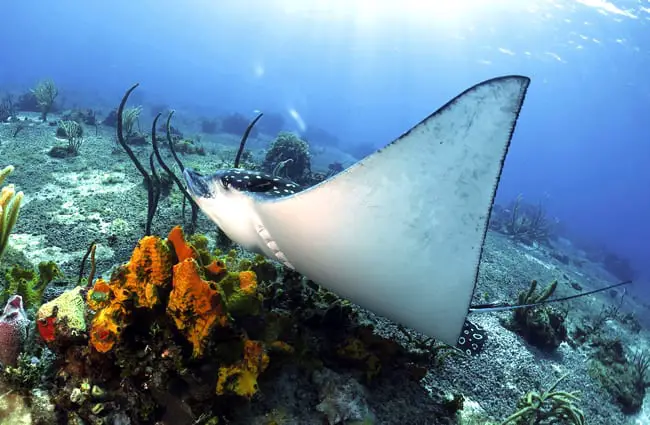
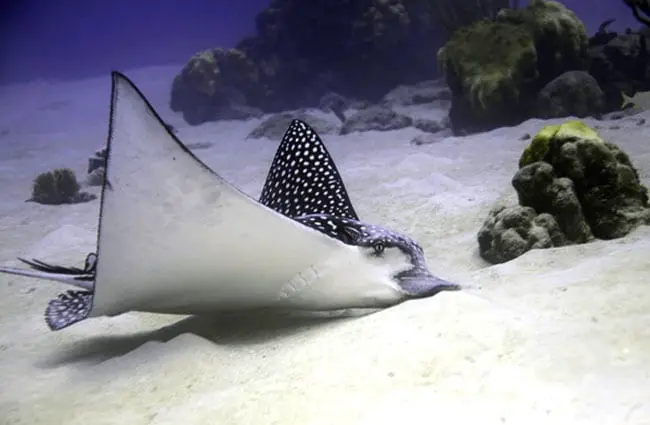

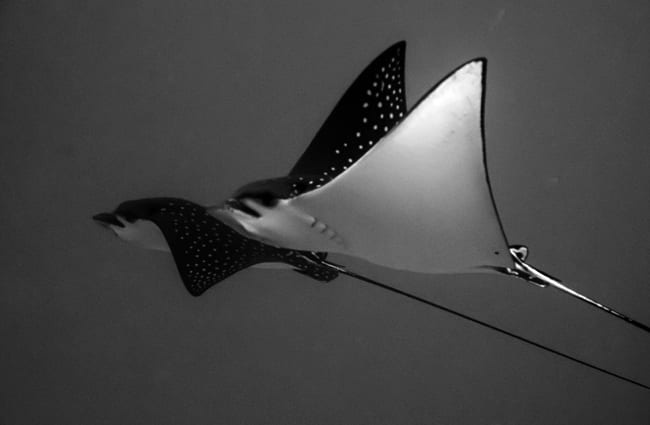
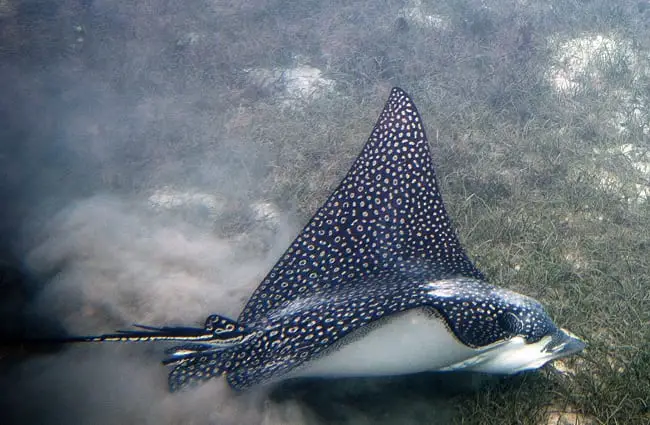

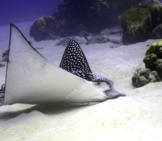
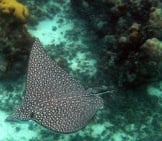
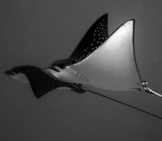
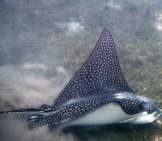
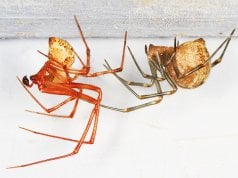












![Red Angus Closeup of a beautiful Red Angus cowPhoto by: U.S. Department of Agriculture [pubic domain]https://creativecommons.org/licenses/by/2.0/](https://animals.net/wp-content/uploads/2020/03/Red-Angus-4-100x75.jpg)

